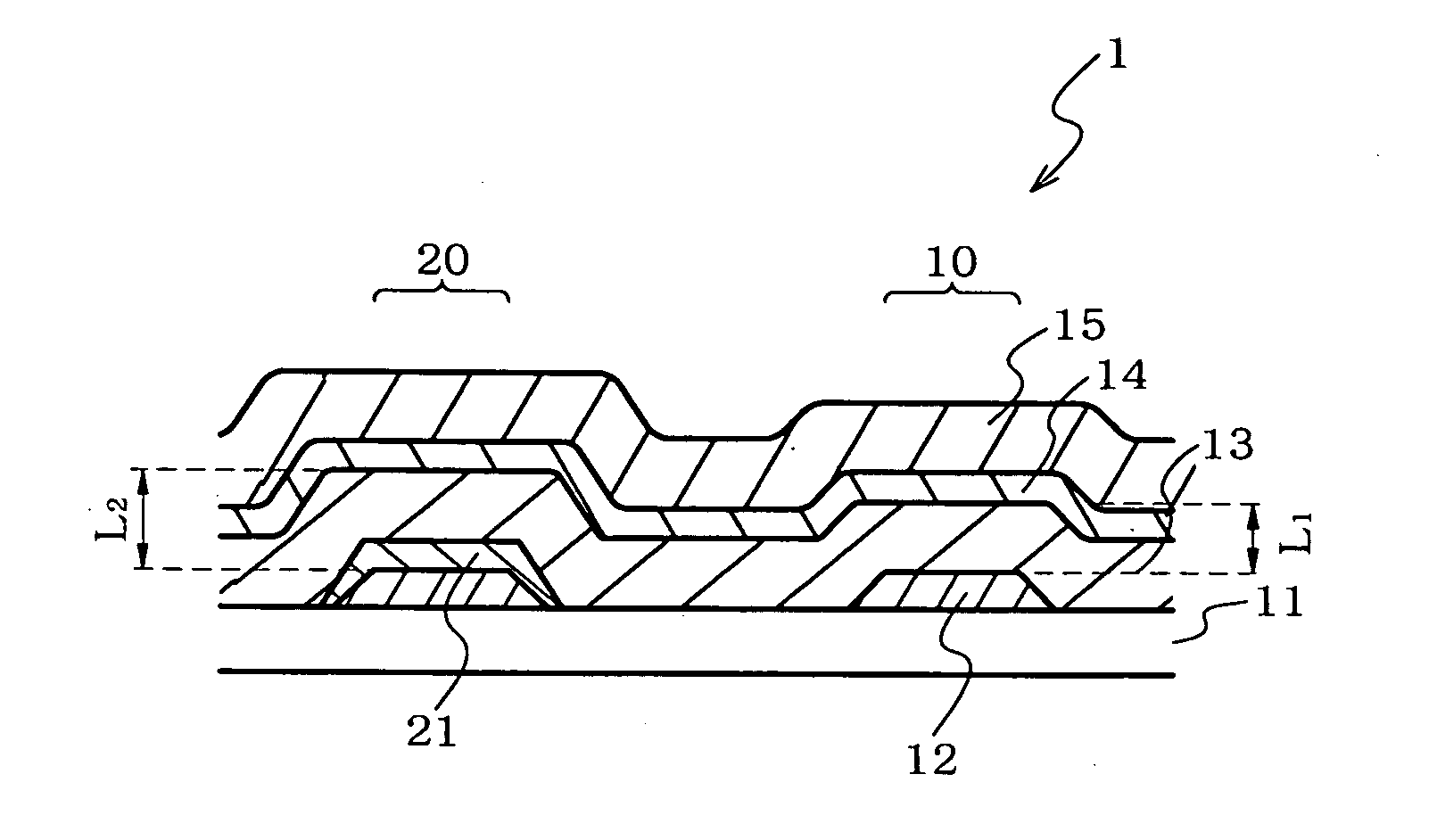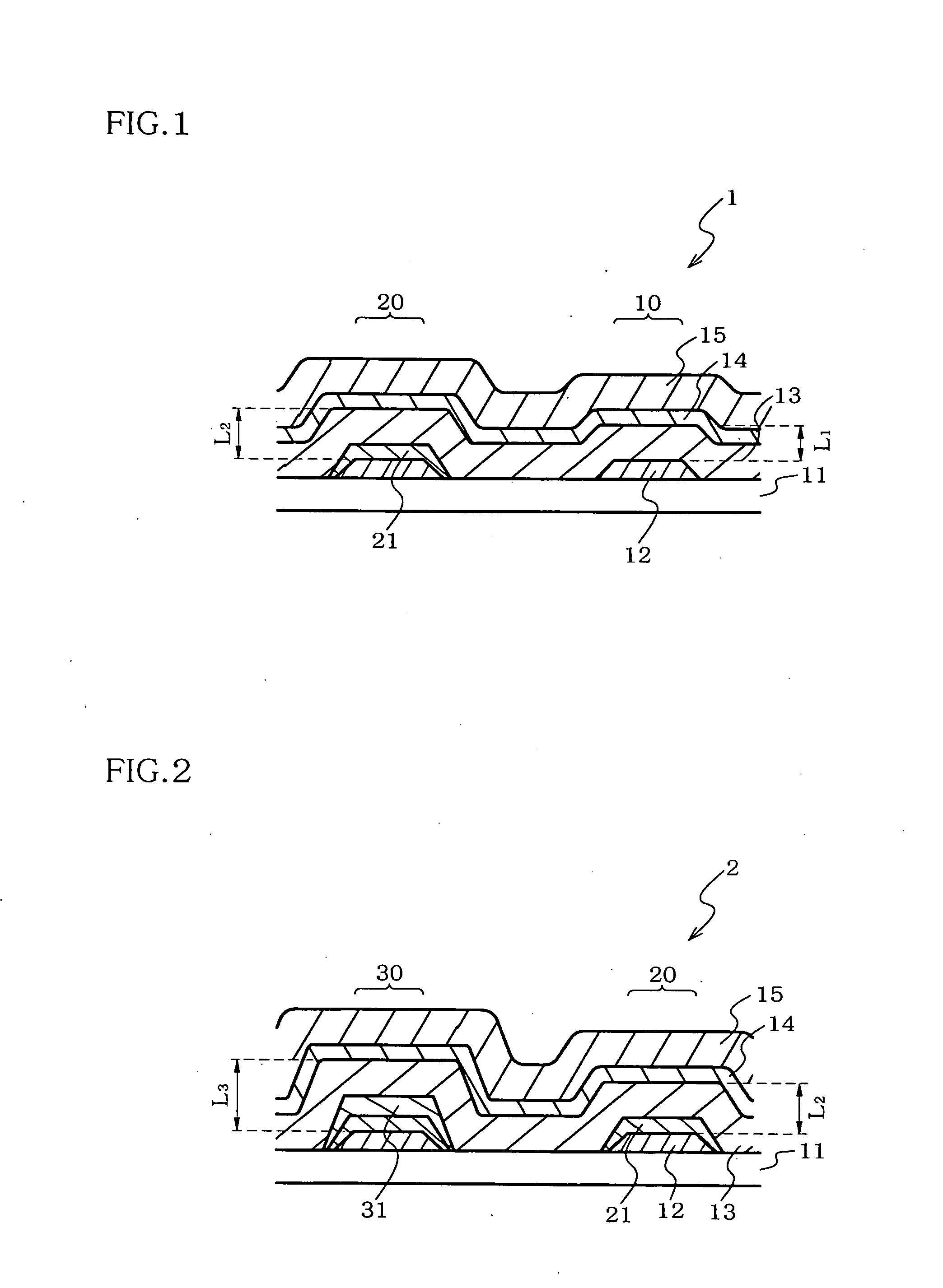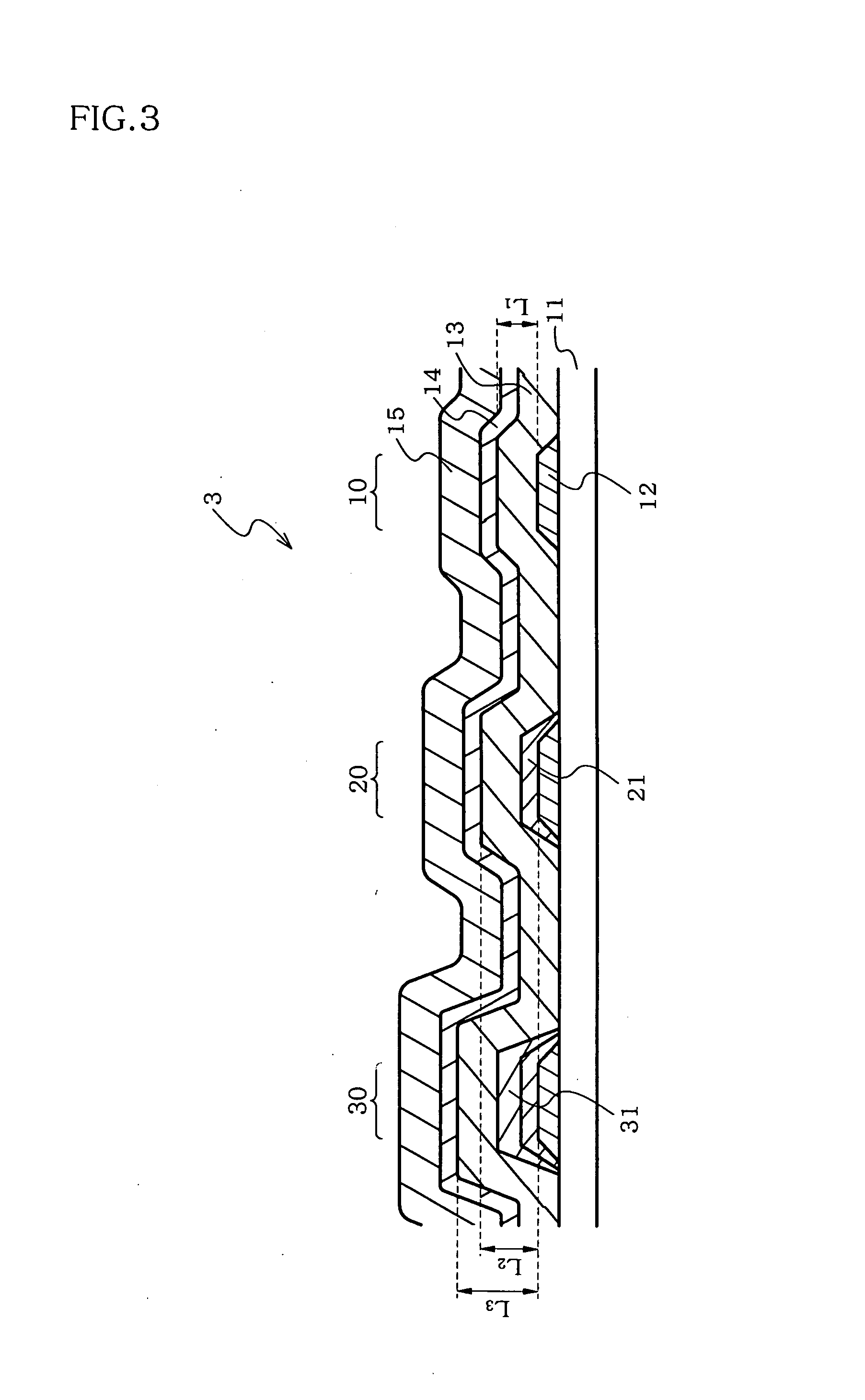Organic Electroluminescence Display Device
- Summary
- Abstract
- Description
- Claims
- Application Information
AI Technical Summary
Benefits of technology
Problems solved by technology
Method used
Image
Examples
first embodiment
[0033]FIG. 1 is a view showing an organic EL display according to a first embodiment of the invention.
[0034] An organic EL display 1 includes a first organic EL device part 10 and a second organic EL device part 20 placed side by side on a substrate 11.
[0035] The first organic EL device part 10 has a structure in which a light reflective conductive layer 12, an organic luminescent medium layer 13, a light reflective layer 14, and a transparent electrode layer 15 are stacked in this order on the substrate 11.
[0036] The second organic EL device part 20 has a structure in which the light reflective conductive layer 12, a first inorganic compound layer 21, the organic luminescent medium layer 13, the light reflective layer 14, and the transparent electrode layer 15 are stacked in this order on the substrate 11.
[0037] The light reflective conductive layer 12 functions as an electrode which supplies holes or electrons, and reflects light from the organic luminescent medium layer 13 in...
second embodiment
[0044]FIG. 2 is a view showing an organic EL display according to a second embodiment of the invention.
[0045] An organic EL display 2 includes the second organic EL device part 20 and a third organic EL device part 30 placed side by side on the substrate 11.
[0046] The second organic EL device part 20 is the same as in the first embodiment.
[0047] The third organic EL device part 30 has a structure in which the light-reflective conductive layer 12, the first inorganic compound layer 21, a second inorganic compound layer 31, the organic luminescent medium layer 13, the light-reflective layer 14, and the transparent electrode layer 15 are stacked in this order on the substrate 11. Specifically, the third organic EL device part 30 is formed in the same manner as the second organic EL device part 20 except that the second inorganic compound layer 31 is formed. The function of each layer is the same as in the second organic EL device part 20.
[0048] The second inorganic compound layer 3...
third embodiment
[0053]FIG. 3 is a view showing an organic EL display according to a third embodiment of the invention.
[0054] An organic EL display 3 includes the first organic EL device part 10, the second organic EL device part 20, and the third organic EL device part 30 placed side by side on the substrate 11.
[0055] The configuration of each of the organic EL device parts 10, 20, and 30 is the same as in the first and second embodiments. The function of each layer is also the same as in the first and second embodiments.
[0056] In the organic EL display 3, the organic EL device parts 10, 20, and 30 respectively have resonator structures which differ in the optical length (optical thickness). Specifically, the optical length is set at L1 for the first organic EL device part 10, set at L2 for the second organic EL device part 20, and set at L3 for the third organic EL device part 30.
[0057] Therefore, light having different wavelengths (λ1, λ, λ3) is respectively enhanced in the organic EL device ...
PUM
 Login to View More
Login to View More Abstract
Description
Claims
Application Information
 Login to View More
Login to View More - R&D
- Intellectual Property
- Life Sciences
- Materials
- Tech Scout
- Unparalleled Data Quality
- Higher Quality Content
- 60% Fewer Hallucinations
Browse by: Latest US Patents, China's latest patents, Technical Efficacy Thesaurus, Application Domain, Technology Topic, Popular Technical Reports.
© 2025 PatSnap. All rights reserved.Legal|Privacy policy|Modern Slavery Act Transparency Statement|Sitemap|About US| Contact US: help@patsnap.com



